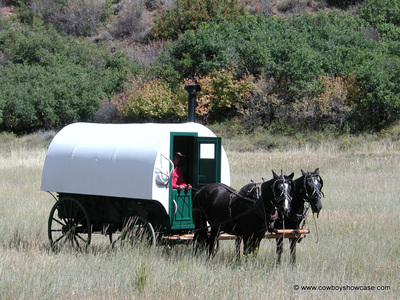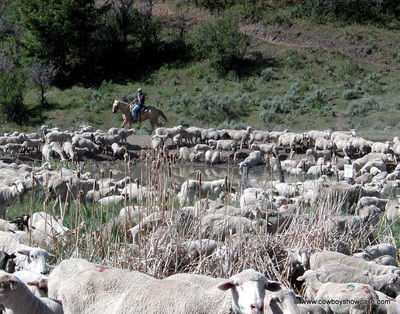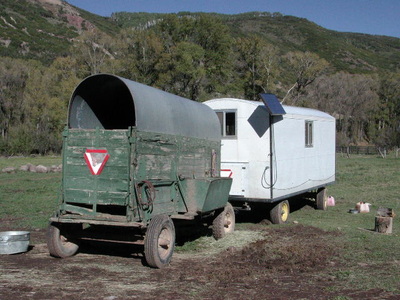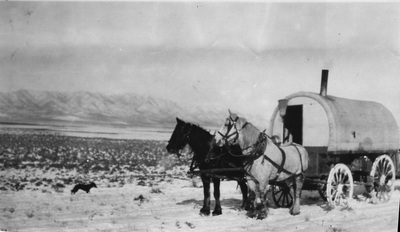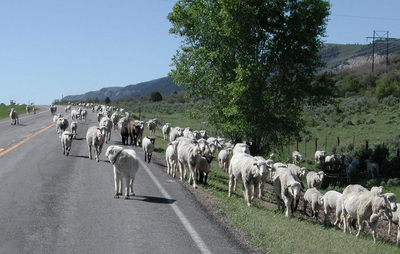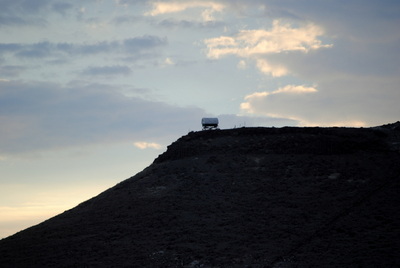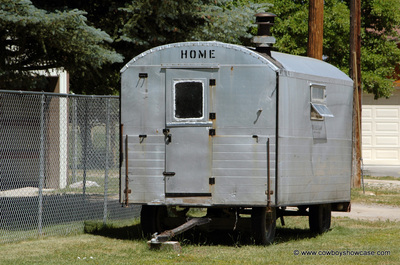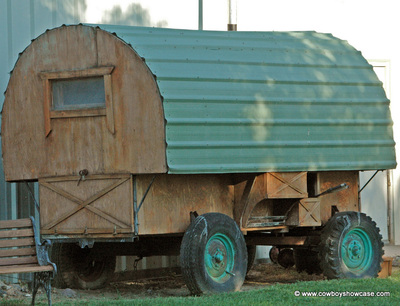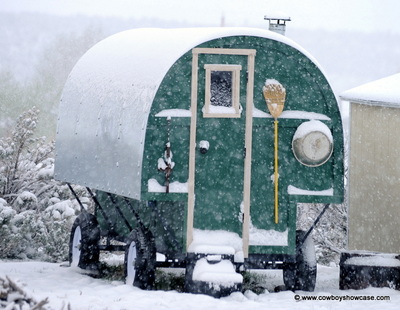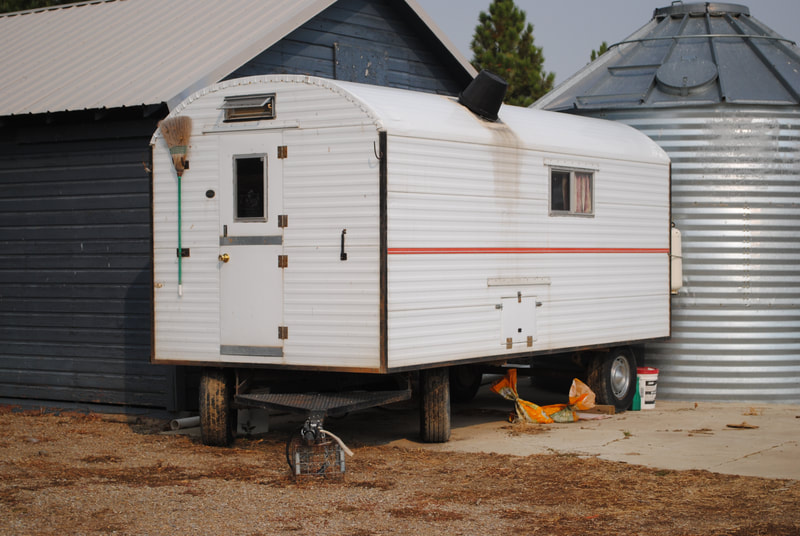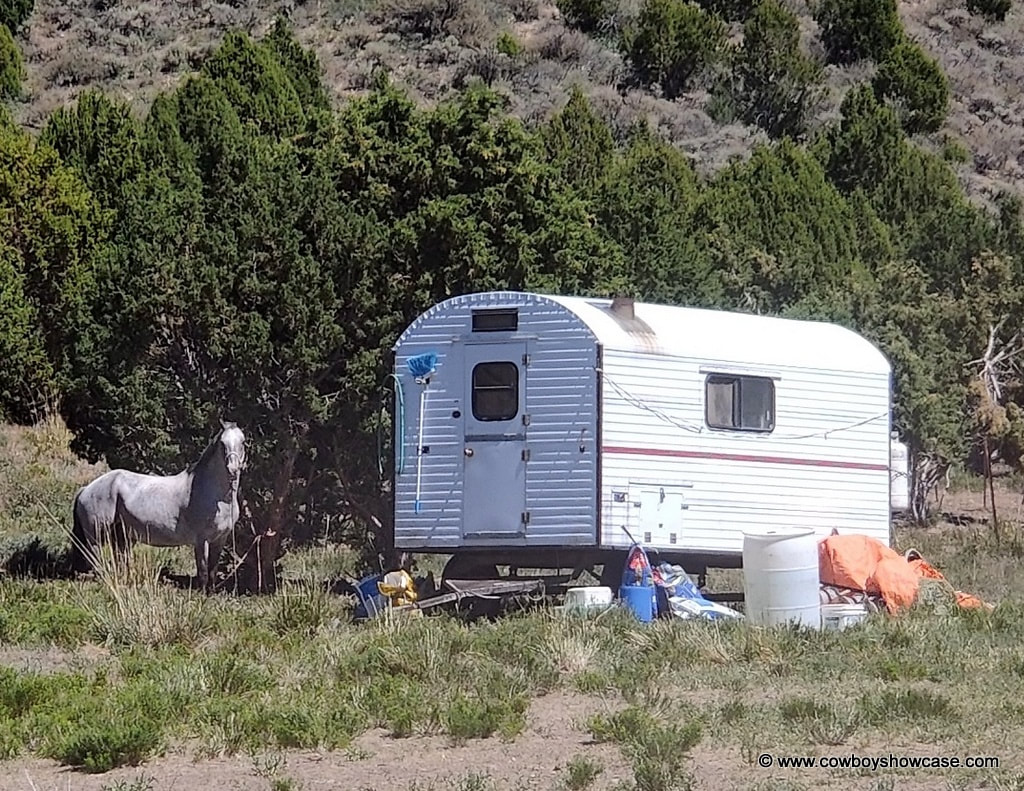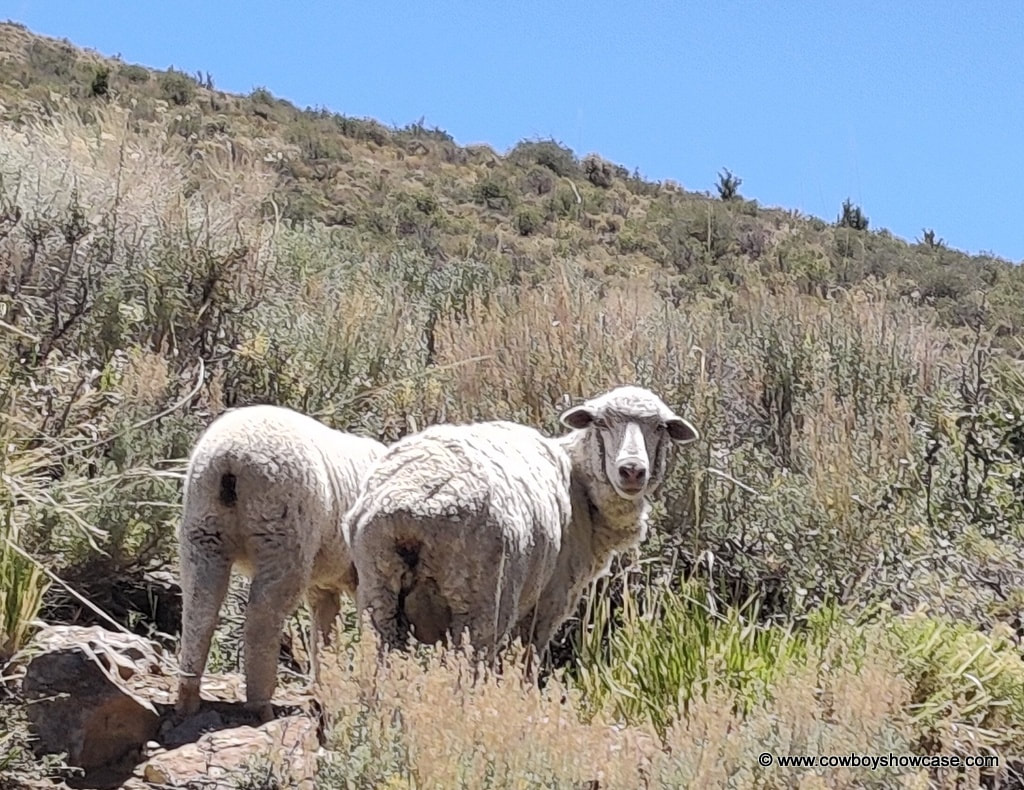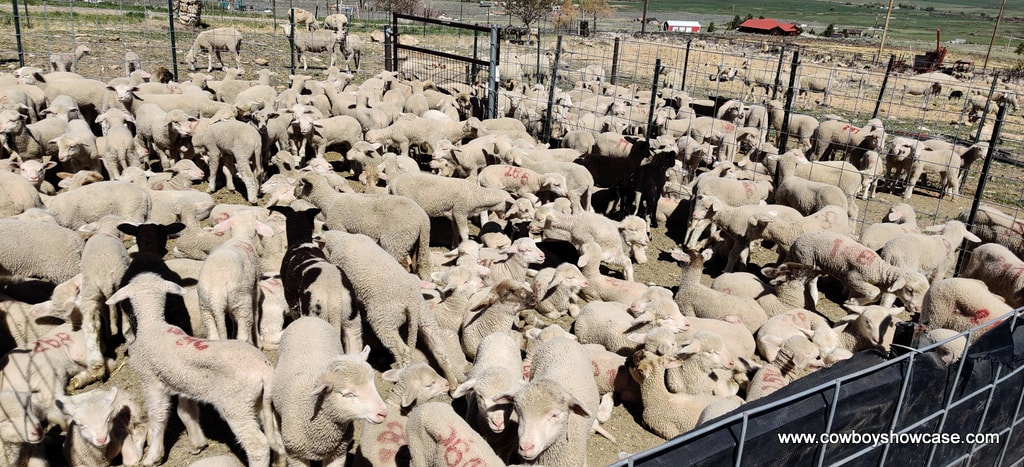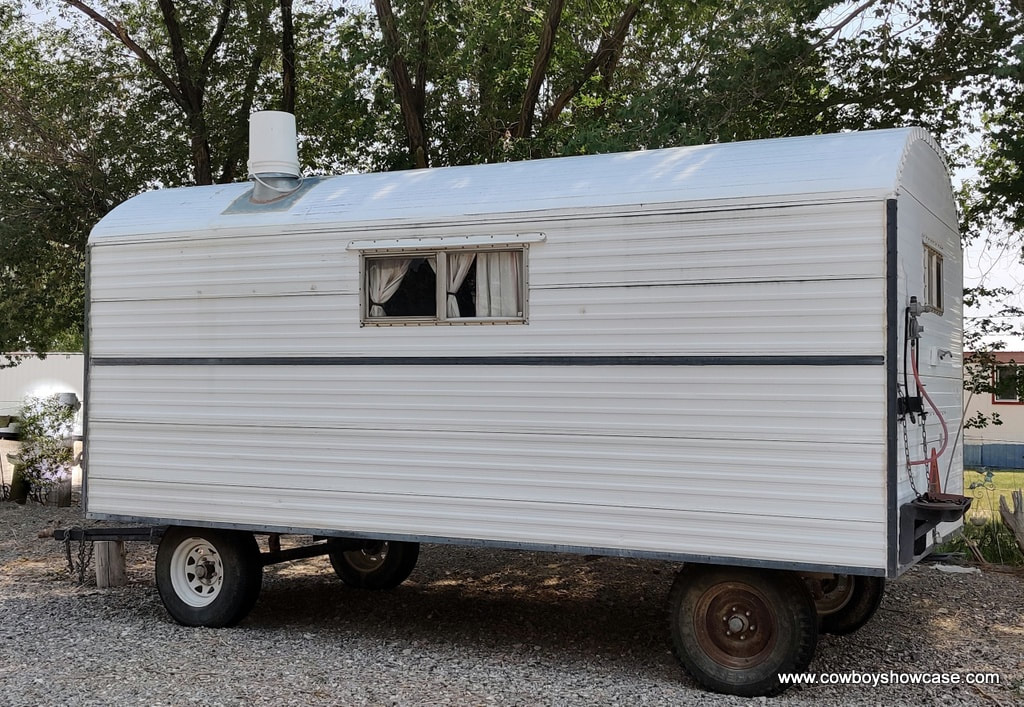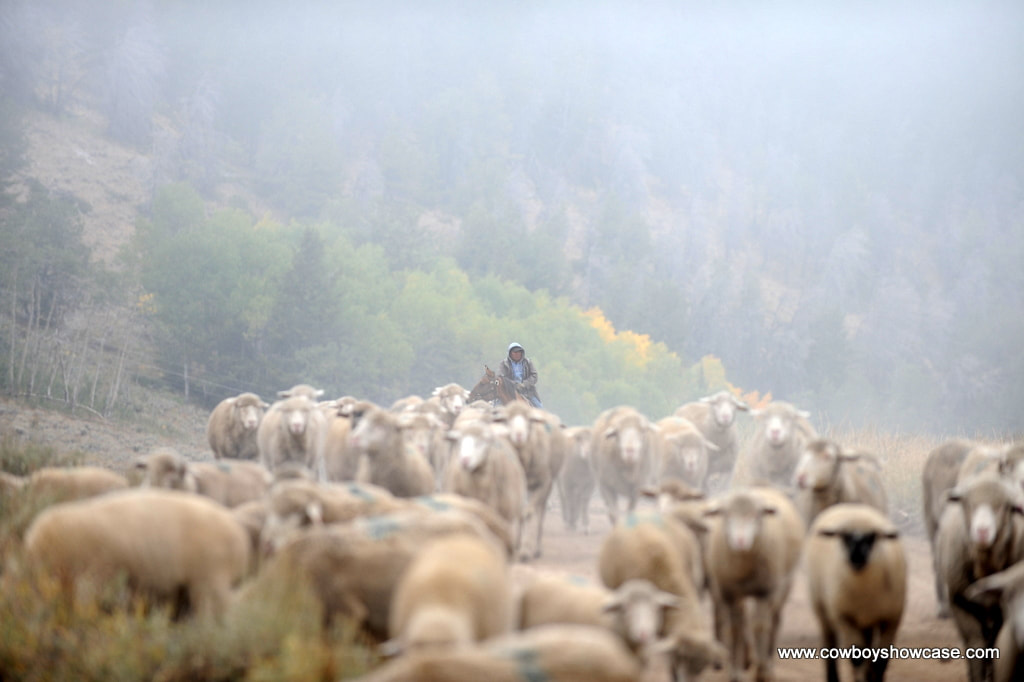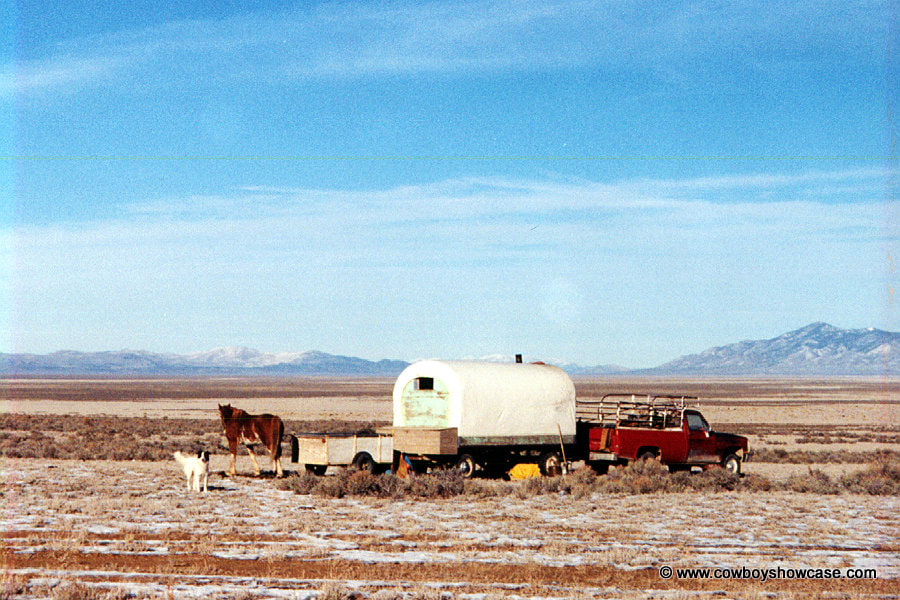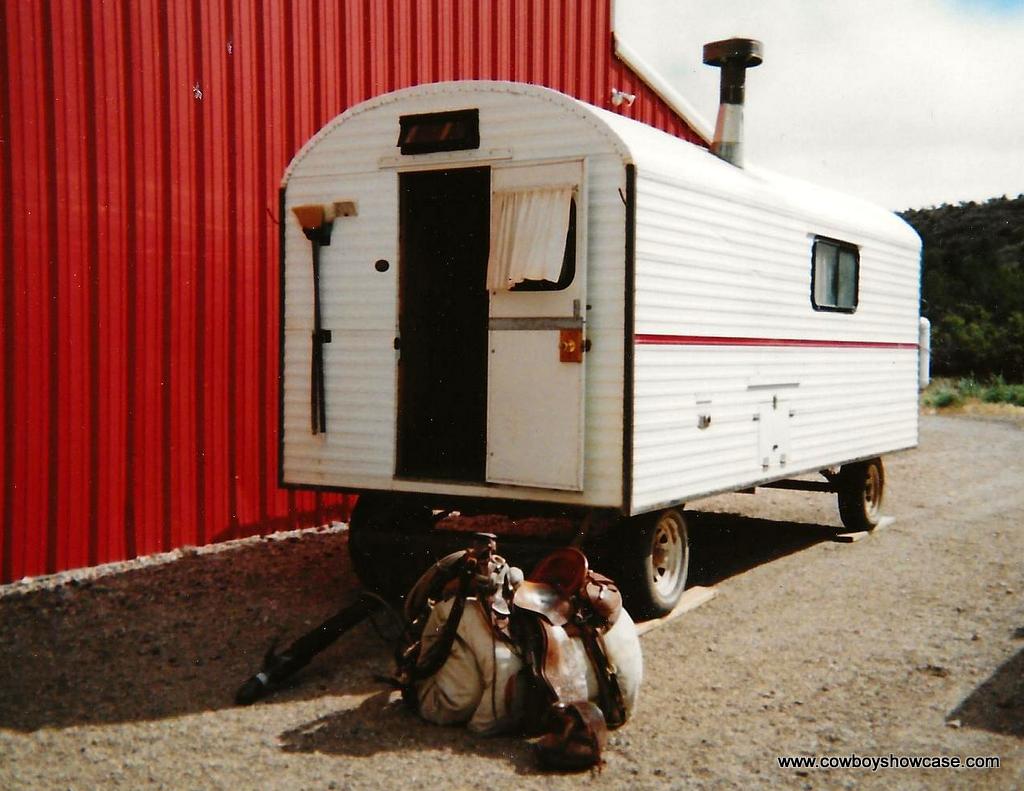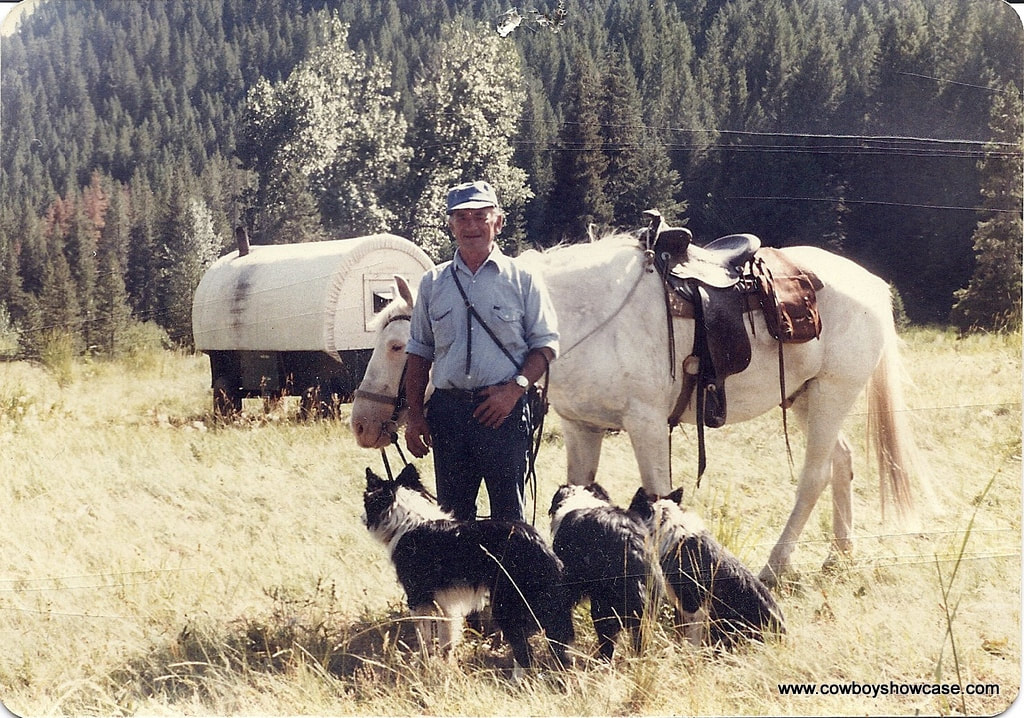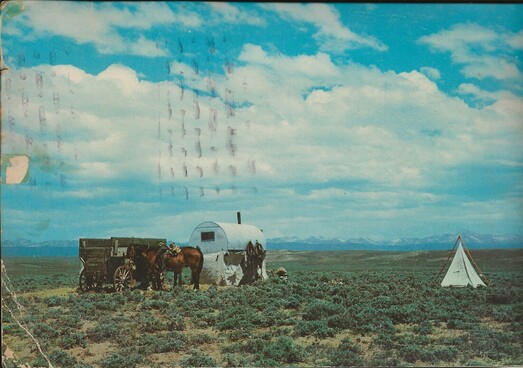The History of the Sheepcamp
Sheepwagon (also called sheepcamp)
James Candlish, a blacksmith from Rawlins, Wyoming is credited with building the first sheepwagon in 1884. The efficient interior configuration evolved from English, European, and military antecedents, including the living areas on sailing vessels. The standard design is 11 feet long and 6-1/2 feet wide, enclosed by a canvas top, with a stove for heat and cooking. The interior boasts well-designed storage places. Compact beds are tucked away. Tables fold down when not in use. Everything has its place. The interior configuration has proved so efficient that the same basic plan is still used in the sheepwagons made today and has served as a model for many modern campers. During earlier years in the American west, millions of sheep were grazed on the rangelands. A lone herder and his dogs could tend a couple of thousand sheep. The sheepwagon was the herder's mobile home as he followed these bands. During the seasonal grazing cycles, sheep were often moved hundreds of miles. A camptender delivered supplies every ten days or so, and was often the herder's only contact with the outside world for months at a time. After World War II, sheep ranchers began to fence their large tracts of private land and left more sheep without a herder. The pickup truck replaced the teams of horses that pulled the wagon. The rancher could more easily check flocks in new four-wheel drive vehicles. Semi trucks and trailers, in many cases, began to move the bands from summer to winter pastures. In some areas, sheepwagons and herders with their dogs and horses are still common. We do see innovations such as solar panels to provide power to the TVs and other modern conveniences. |
|
- Home
-
Gear
-
Arts
-
Horses
- Diamond Z English Shire Horses
- 5 Tips for Traveling
- Harnessing A Team
- The Dameles and the Curly Horse
- Rounding Up Wild Horses
- Extreme Horse Camping
- First Pull on the Latigo
- Twister Heller Starts a Colt
- Cowboy Martingale
- Cowboy Training Halter
- Cowboy & Colt Clinic
- Using the McCarty
- Teach a Horse to Stand
- Cowboy Draw Reins
- War Knots >
- Tail Knot for Pack Horses
- Cavvy Marks
- Deworming Your Horse
- Safe Fall Trail Riding
- Horse Remedies
- Hormone Implant
- How to buy a mule
- Brands
- Chuckwagon
-
Articles
- Grubbing Hoe Ranch
- Trevor and Emily Fuhriman
- Land of Extremes
- Jersey Valley Cattle Co
- Diamond Tail Ranch
- Gang Ranch of British Columbia
- TS Ranch of Nevada
- When the TS Ran a Wagon
- IL Ranch
- Basque Ranching
- Crystal Rose Cow Dog College
- Wyoming Honor Farm Inmate/Wild-Horse Program
- Cowboy Etiquette
- Arizona Trigger
- Longhorn Cattle
-
Stories
- For the Love of a Horse
- Breakheart Station Master
- Freighters Outbound
- DK Cowboy Stories: A Prophet With Antlers
- Ben's Trail
- Spendin’ Time at Cow Camps
- Slewfoot The Black Bear
- Orphan Boy
- Mooney's Stories - The Circle A Ranch of Nevada >
- Wild Horse Casey >
- Hero Cattle Dogs
- Ranching Traditions
- Life Lessons
- Dave’s Summer Adventure
- Fire-Proofing the Range
- Cowboy Superstitions
- Cowboy Humor
- Portrait of a Cowboy >
- Tons of Silver
- History
- Cowboy Profiles
- Glossary
- Cowboys of the World
Cowboy Showcase e-mail
Web site design by Lee Raine
Photos by Lee Raine unless otherwise noted.
Copyright © 2000-2024 by Lee Raine. All rights reserved.
External links are listed as a convenience. We take no responsibility and give no guarantees or warranties, implied or otherwise, for content or accuracy of third-party sites. External sites are not necessarily endorsed by Cowboy Showcase.
Web site design by Lee Raine
Photos by Lee Raine unless otherwise noted.
Copyright © 2000-2024 by Lee Raine. All rights reserved.
External links are listed as a convenience. We take no responsibility and give no guarantees or warranties, implied or otherwise, for content or accuracy of third-party sites. External sites are not necessarily endorsed by Cowboy Showcase.
